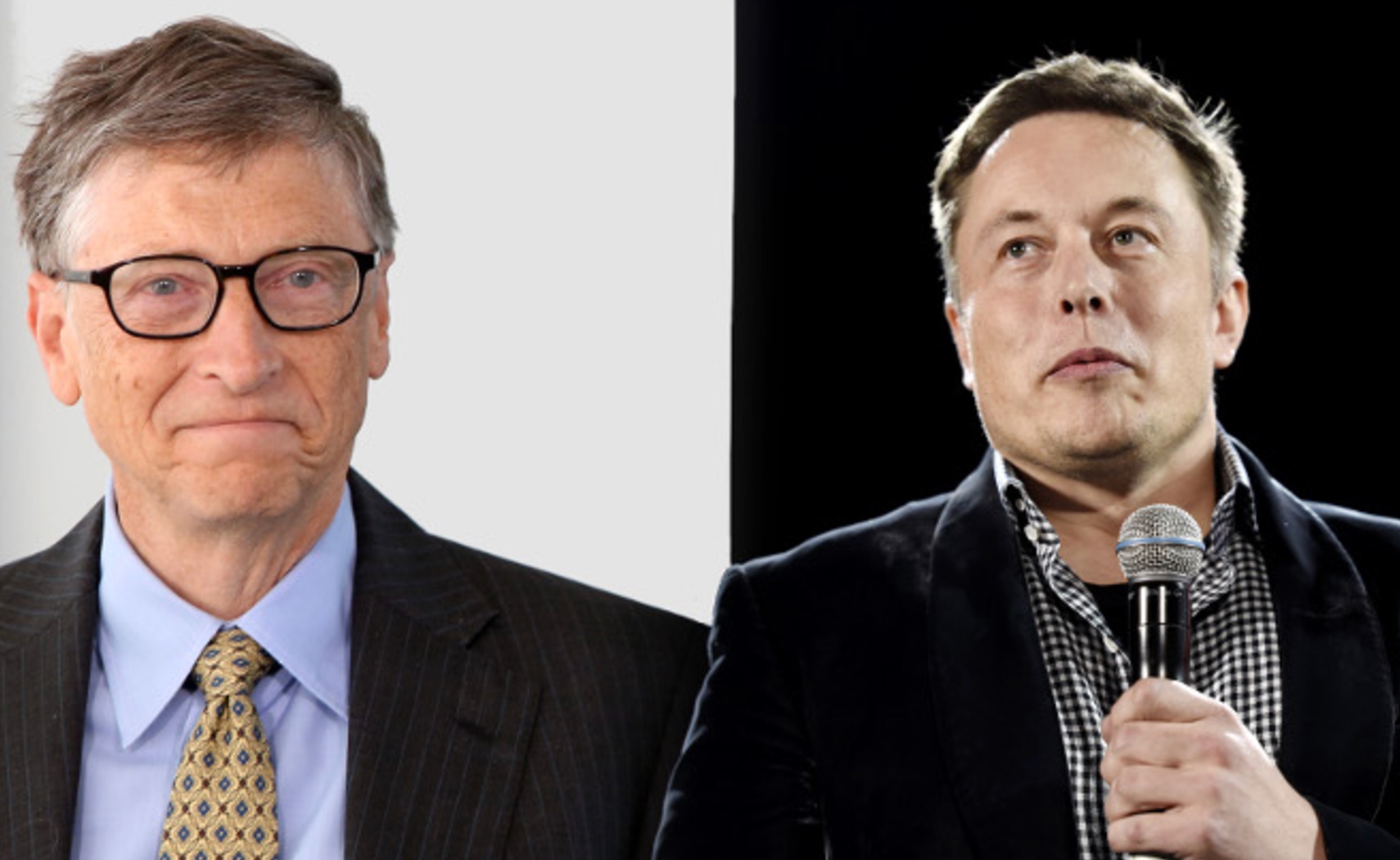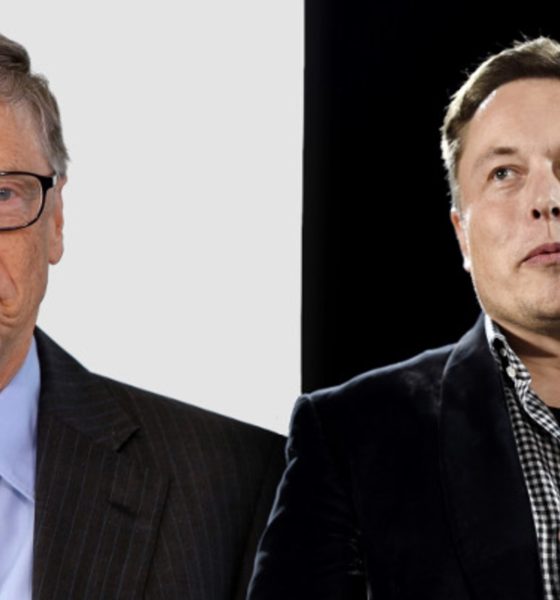

News
Tesla who? Bill Gates refuses to mention EV leader in blog post
Tesla has done more than any other company to accelerate the transportation movement toward electrification. By introducing the Model S in 2012, Tesla proved electric cars could be fast and exciting and sustainable at the same time. However, Tesla’s notable surge in popularity over the past few years wasn’t enough to convince Bill Gates to mention the company in his most recent blog post. Instead, he chose to credit legacy carmakers GM and Ford, and new kids on the block Rivian and Bollinger, leaving Tesla as a forgotten and unmentioned despite its much-deserved notoriety when talking about electric vehicles.
In a blog post on GatesNotes.com, the former Microsoft frontman talked about the struggle between traveling and contributing to global climate change. While moving and exploring is a part of life, the use of cars that are powered by petrol are contributing to the influx of emissions that are poisoning the Earth’s atmosphere.
Gates, who is a known supporter of electric vehicles, drives Porsche Taycan. The product of a prestigious private college in Massachusetts, known as Harvard, was more than willing to express his gratitude for the companies that are assisting in the surge toward cleaner transportation.
While electric sedans have been available for several years across a variety of car companies, pickup truck designs are rare. While the sustained focus on small passenger vehicles has subsided slightly in favor of crossovers and SUVs, other car companies are working on all-electric pickups, which would be a valuable contribution to the American automotive market.
“You’ll even be able to buy an all-electric pickup truck soon thanks to legacy companies like GM and Ford and new carmakers like Rivian and Bollinger,” Gates said. However, he left out the one company that has a sizeable lead in the EV sector, according to some of its competitors: Tesla.
Interestingly enough, Gates even talked about the widespread availability of EV batteries, which is a much-improved topic compared to 2010. Gates said that the price of battery cells has dropped 85% since that year, “so they’re getting more affordable to purchase,” he added.
However, the most bang for your buck in terms of EVs and battery quality is Tesla, which makes it interesting that Gates would leave out such a large contributor to the very subject his blog post was focused on.
The reason for leaving Tesla out of the conversation is unknown. However, Gates has been vocally critical of Musk in the past, especially when concerning the Tesla CEO’s comments about the coronavirus. Gates said that he hoped Musk would not “confuse areas he’s not involved in too much,” in an interview with CNBC.
However, Musk is involved in the fight against the pandemic, as he has donated ventilators, developed his own in-house breathing system using Tesla auto parts, and has worked with pharmaceutical companies to build RNA printers that could assist in the development of a vaccine.
Leaving Tesla out of the conversation when talking about electric vehicles is like leaving out Microsoft when talking about computers. Tesla is the company that has made electric cars mainstream and has convinced other car companies that it is time to move away from gas-powered automobiles. Some of the largest companies in the world admit that Tesla is years ahead of everyone else, and for a good reason. The company was building EVs before the public widely accepted it.
Gates’ full blog post is available here.

News
Tesla FSD fleet is nearing 7 billion total miles, including 2.5 billion city miles
As can be seen on Tesla’s official FSD webpage, vehicles equipped with the system have now navigated over 6.99 billion miles.

Tesla’s Full Self-Driving (Supervised) fleet is closing in on almost 7 billion total miles driven, as per data posted by the company on its official FSD webpage.
These figures hint at the massive scale of data fueling Tesla’s rapid FSD improvements, which have been quite notable as of late.
FSD mileage milestones
As can be seen on Tesla’s official FSD webpage, vehicles equipped with the system have now navigated over 6.99 billion miles. Tesla owner and avid FSD tester Whole Mars Catalog also shared a screenshot indicating that from the nearly 7 billion miles traveled by the FSD fleet, more than 2.5 billion miles were driven inside cities.
City miles are particularly valuable for complex urban scenarios like unprotected turns, pedestrian interactions, and traffic lights. This is also the difference-maker for FSD, as only complex solutions, such as Waymo’s self-driving taxis, operate similarly on inner-city streets. And even then, incidents such as the San Francisco blackouts have proven challenging for sensor-rich vehicles like Waymos.
Tesla’s data edge
Tesla has a number of advantages in the autonomous vehicle sector, one of which is the size of its fleet and the number of vehicles training FSD on real-world roads. Tesla’s nearly 7 billion FSD miles then allow the company to roll out updates that make its vehicles behave like they are being driven by experienced drivers, even if they are operating on their own.
So notable are Tesla’s improvements to FSD that NVIDIA Director of Robotics Jim Fan, after experiencing FSD v14, noted that the system is the first AI that passes what he described as a “Physical Turing Test.”
“Despite knowing exactly how robot learning works, I still find it magical watching the steering wheel turn by itself. First it feels surreal, next it becomes routine. Then, like the smartphone, taking it away actively hurts. This is how humanity gets rewired and glued to god-like technologies,” Fan wrote in a post on X.
News
Tesla starts showing how FSD will change lives in Europe
Local officials tested the system on narrow country roads and were impressed by FSD’s smooth, human-like driving, with some calling the service a game-changer for everyday life in areas that are far from urban centers.

Tesla has launched Europe’s first public shuttle service using Full Self-Driving (Supervised) in the rural Eifelkreis Bitburg-Prüm region of Germany, demonstrating how the technology can restore independence and mobility for people who struggle with limited transport options.
Local officials tested the system on narrow country roads and were impressed by FSD’s smooth, human-like driving, with some calling the service a game-changer for everyday life in areas that are far from urban centers.
Officials see real impact on rural residents
Arzfeld Mayor Johannes Kuhl and District Administrator Andreas Kruppert personally tested the Tesla shuttle service. This allowed them to see just how well FSD navigated winding lanes and rural roads confidently. Kruppert said, “Autonomous driving sounds like science fiction to many, but we simply see here that it works totally well in rural regions too.” Kuhl, for his part, also noted that FSD “feels like a very experienced driver.”
The pilot complements the area’s “Citizen Bus” program, which provides on-demand rides for elderly residents who can no longer drive themselves. Tesla Europe shared a video of a demonstration of the service, highlighting how FSD gives people their freedom back, even in places where public transport is not as prevalent.
What the Ministry for Economic Affairs and Transport says
Rhineland-Palatinate’s Minister Daniela Schmitt supported the project, praising the collaboration that made this “first of its kind in Europe” possible. As per the ministry, the rural rollout for the service shows FSD’s potential beyond major cities, and it delivers tangible benefits like grocery runs, doctor visits, and social connections for isolated residents.
“Reliable and flexible mobility is especially vital in rural areas. With the launch of a shuttle service using self-driving vehicles (FSD supervised) by Tesla in the Eifelkreis Bitburg-Prüm, an innovative pilot project is now getting underway that complements local community bus services. It is the first project of its kind in Europe.
“The result is a real gain for rural mobility: greater accessibility, more flexibility and tangible benefits for everyday life. A strong signal for innovation, cooperation and future-oriented mobility beyond urban centers,” the ministry wrote in a LinkedIn post.
News
Tesla China quietly posts Robotaxi-related job listing
Tesla China is currently seeking a Low Voltage Electrical Engineer to work on circuit board design for the company’s autonomous vehicles.

Tesla has posted a new job listing in Shanghai explicitly tied to its Robotaxi program, fueling speculation that the company is preparing to launch its dedicated autonomous ride-hailing service in China.
As noted in the listing, Tesla China is currently seeking a Low Voltage Electrical Engineer to work on circuit board design for the company’s autonomous vehicles.
Robotaxi-specific role
The listing, which was shared on social media platform X by industry watcher @tslaming, suggested that Tesla China is looking to fill the role urgently. The job listing itself specifically mentions that the person hired for the role will be working on the Low Voltage Hardware team, which would design the circuit boards that would serve as the nervous system of the Robotaxi.
Key tasks for the role, as indicated in the job listing, include collaboration with PCB layout, firmware, mechanical, program management, and validation teams, among other responsibilities. The role is based in Shanghai.
China Robotaxi launch
China represents a massive potential market for robotaxis, with its dense urban centers and supportive policies in select cities. Tesla has limited permission to roll out FSD in the country, though despite this, its vehicles have been hailed as among the best in the market when it comes to autonomous features. So far, at least, it appears that China supports Tesla’s FSD and Robotaxi rollout.
This was hinted at in November, when Tesla brought the Cybercab to the 8th China International Import Expo (CIIE) in Shanghai, marking the first time that the autonomous two-seater was brought to the Asia-Pacific region. The vehicle, despite not having a release date in China, received a significant amount of interest among the event’s attendees.








